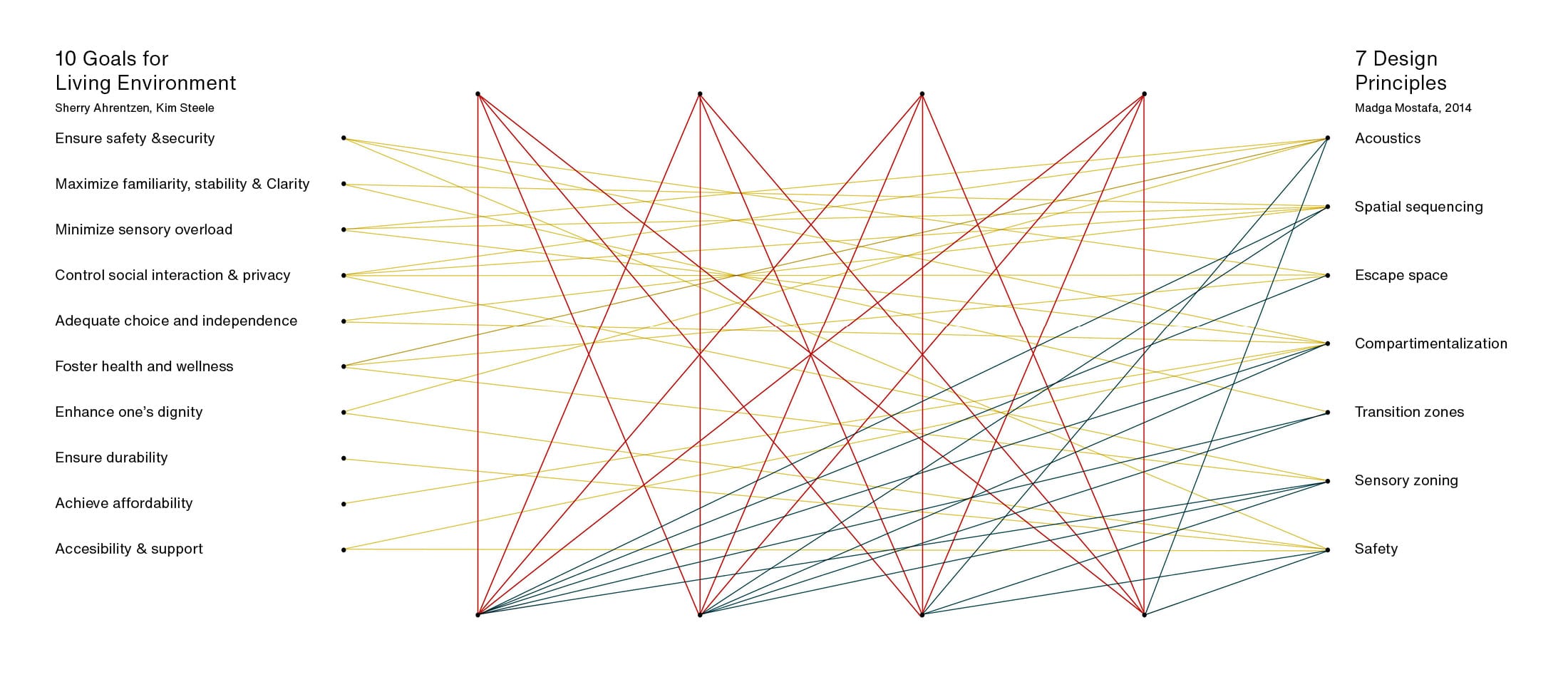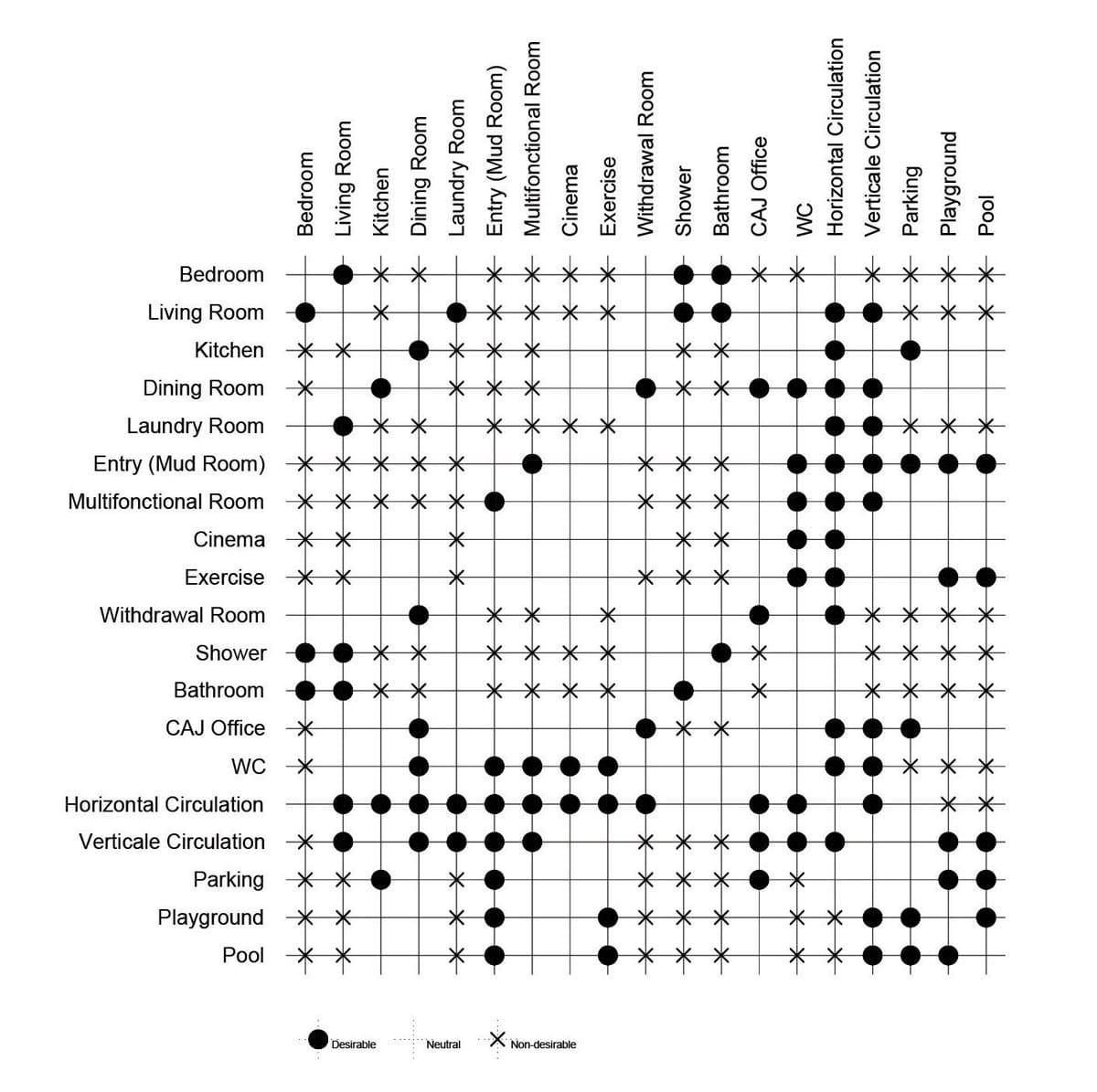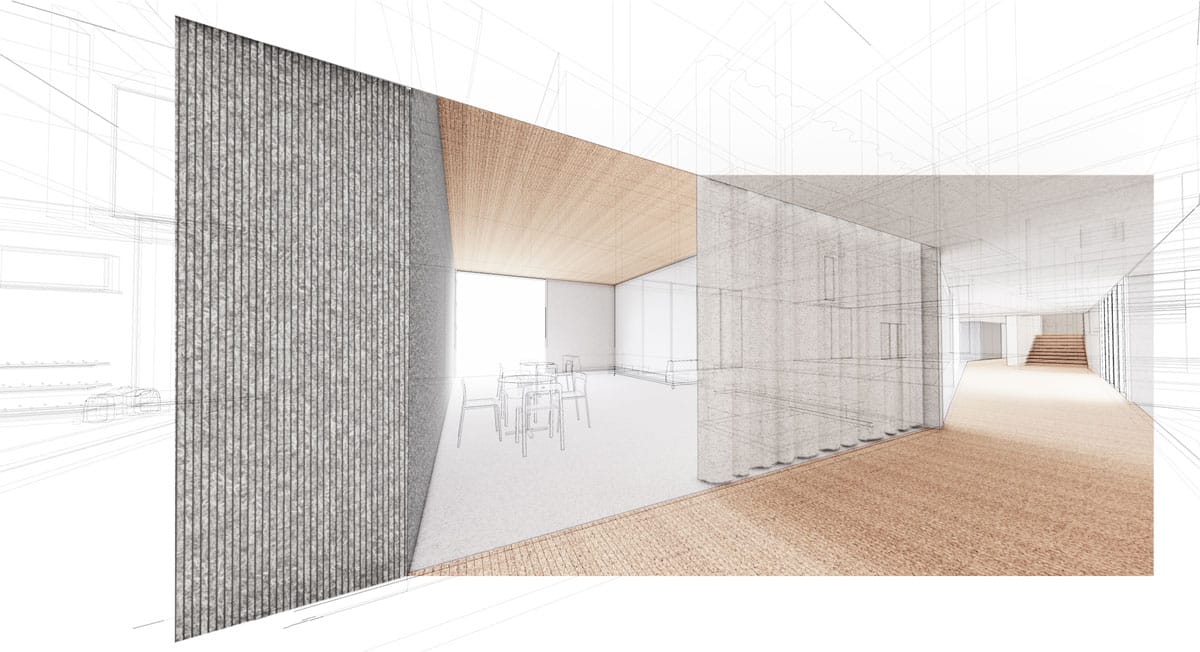In the case of individuals with ASD, sensory inputs are processed differently which alters the perception and interpretation of space, making a person hyper or hypo-responsive to their environment. This research and design project defines a new paradigm for the design of living environments, where the senses are brought forward to build adaptive and inclusive spaces that support physical independence.
It is a form of sensory design which seeks to reach beyond the visual and rethinks space through all senses, one which activates, triggers and amplifies the inter-sensory relationships of touch, smell, sound, sight, and the wisdom of the body.
Beginning with an academic framework shaped by the study of scientific, psychological and architectural literature informed in part by work with Fondation Yvon Lamarre, a design syntax fundamentally linked to haptic experiences was created, taking the form of five distinct design drivers which could act as design strategies.
Threshold: Working to facilitate both spatial sequencing and sensory zoning, the presence of transition zones and clear spatial distinctions helps the user to recalibrate their senses as they move from one level of stimulus to the next. Mediating hard transitions such as moving from the interior to the exterior or high stimuli spaces to low stimuli ones, access must be generously covered, helping to smooth the many stimuli at play and process new environments as they unfold.
Sequence: Spatial logic helps users make spatial decisions. This understanding allows for the establishment of adequate links between rooms, based not only on spatial logic, but also on sensory compatibility. This compartmentalization provides clear spaces with strong directionality.
Aperture: Openings must be designed to mark and clarify the function of each room, as well as provide the right amount of light, views and air while establishing a suitable exterior connection, curated in ways which adapt to presence of sensory stimuli or lack thereof.
Identity: Centered around questions of how architecture be both inclusive and neutral, the identity of the space is two-fold; from the outside looking in, the overall space should respond to its broader community as an inclusive and functional hub that acknowledges and respects the identity of those who occupy it. Inside, residents are recognized and catered to through the living environment design’s identifiability and haptic qualities for comfort while providing controlled interactivity with the outside world.
Flux: As minute shifts in stimuli can vary in intensity for hyper- or hypo-responsive individuals, changing whole living environments pose immense challenges to those living with IDs and ASD. Design must then adapt to those who occupy it, with flexibility towards future changes of growing independence, such as the capability of expanding to include more or less residents.
Sensory Spectrum
Example of a sensory spectrum for residences, wherein an understanding of programmatic elements and their adequate spatial links between rooms are based on both spatial logic and sensory compatibility.
 Yvon Lamarre Foundation
Yvon Lamarre Foundation 







